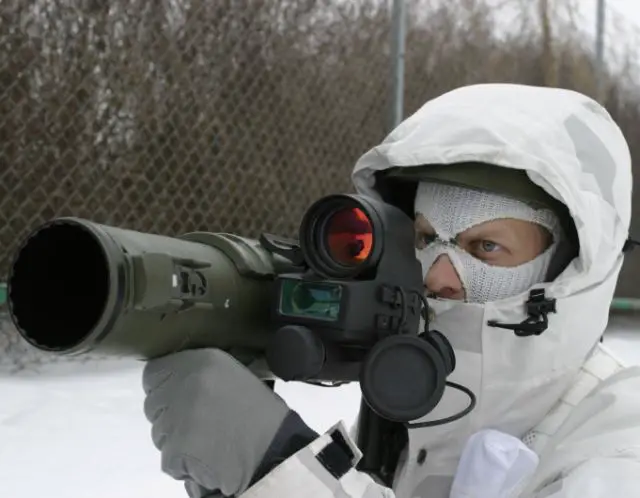The Quadrennial Diplomacy and Development Review (QDDR) is a sweeping assessment of how the Department of State and the United States Agency for International Development (USAID) can become more efficient, accountable, and effective in a world in which rising powers, growing instability, and technological transformation create new threats, but also new opportunities. At its core the QDDR provides a blueprint for elevating American “civilian power” to better advance our national interests and to be a better partner to the U.S. military. Leading through civilian power means directing and coordinating the resources of all America’s civilian agencies to prevent and resolve conflicts; help countries lift themselves out of poverty into prosperous, stable, and democratic states; and build global coalitions to address global problems.
I just went through the QDDR and tried to find all the parts that talked about security contractors. They talk about contractors in general, and from what I gather there really isn’t anything new or radical about DoS’s position. They still want to use more federal civilians to do this work or to supervise contractors, and they want to increase and improve upon contractor oversight. And I think they are doing that. Hell, they have plenty of reports and lessons learned to go off of.
What is important to point out though is that State is wanting to do more forward looking and strategic planning, just so budgeting could reflect that. That is good, because companies can then plan accordingly for that kind of strategic planning. It adds more stability to the process, and it allows companies to better prepare for what State or USAID really need.
Along those lines, I posted a brief introduction to State’s new bureau below. It is called the Bureau of Conflict and Stabilization Operations or CSO. This is the group that will:
-Get ahead of change. While the scale and types of future crises cannot be predicted, the complex nature and cascading effects of 21st century challenges require a more forward-looking State Department. CSO will support the State Department’s ability to anticipate major security challenges by providing timely, operational solutions.
-Drive an integrated response. CSO will build integrated approaches to conflict prevention and stabilization by linking analysis, planning, resources, operational solutions, and active learning and training. The bureau will call on its civilian responders to deploy in a timely manner to areas of instability in order to bring the right mix of expertise to each unique situation.
-Leverage partnerships. CSO will work with a range of non-governmental and international partners to prevent conflict, address sources of violence, build on existing resiliencies, and promote burden-sharing. In particular, CSO will encourage greater involvement of local civil society – including women, youth, and the media – to prevent and respond to conflict.
State has also recognized that we are experiencing a very fast moving and complex world environment right now. The Arab Spring, the global economy, wars, and revolutions in the various countries of the middle east and world are opening new opportunities for the US government. It takes a flexible ‘smart power’ approach to take advantage of that. Contractors are a big part of that flexible smart power approach.
We are also crucial to filling vacuums of capability and security. Iraq is a prime example. Because of politics in Iraq and in the US, US troops are no longer welcome. But in order to insure our investment of blood and treasure in Iraq doesn’t go to waste, and for our strategic interest in the region to continue to be met, it is vital to maintain a presence and apply that smart power there. DoS used to rely on a combination of the military and their security contractors to provide the security necessary to perform their diplomatic missions outpost security. Now security contractors, with Diplomatic Security personnel managing that effort, will have to accomplish the task. And the insurgency in Iraq is still active, and Iran is still supplying weapons to opposition groups. In other words, the troops might be gone, but the danger of attacks are still there.
As to interesting points about private security contractors, I thought this one was interesting:
-Video recording systems and tracking systems installed in vehicles.
I just think it is very interesting that Erik Prince was pushing for video cameras in the vehicles, way before the Nisour Square incident, and State fought that. Now of course, video cameras in vehicles is policy. Which is great, because now there will be an official video record that can be presented in regards to the performance, good or bad, of a security contractor and their team. The video does not lie, and it will eliminate the ‘he said, she said’ game. Plus it will help in a court of law, much like how they are used in law enforcement.
And in a world where security contractors can easily be thrown under the bus based on politics or whatever, a tape of an incident could make all the difference in proving a security contractors actions were sound and based on a solid threat. Or to prove that ‘yes, the motorcade was fired upon first, and here is the video to prove it’. A tape can also help to get rid of poor contractors, or can add a better picture of the incident for an after action review. Although we will see how it is used, good or bad, and only time will tell.
Which brings me to my next point. I know how important these guys are, everyone in this industry knows how important security contractors are, and State/USAID knows just how important we are. Too bad the public doesn’t know this, because no one in State or USAID promotes how important we are to the press or public? A great example was the silence from DoS about the whole Kabul Embassy attack? Contractors definitely saved the day there, but the public hasn’t a clue about that performance or effort.
I guess Secretary Clinton’s new policy on armed guards on boats is a start, but I definitely would like to see these agencies give more of an effort to recognize the good efforts and sacrifice of the men and women who put their lives on the line to defend them? Or at least acknowledge just how important we really are to their mission and strategic goals? – Matt
From the QDDR on Private Security Contractors
Enhance and improve private security contractor oversight and accountability.
State uses private security contractors to help meet the extraordinary security requirements in critical threat and non-permissive environments. Through operational changes already implemented and an examination conducted as part of the QDDR, State is ensuring proper management, oversight, and operational control of the private security contractors we deploy overseas. We institutionalized many of these changes through the new Worldwide Protective Services contract awarded in September 2010, which incorporates lessons learned to ensure that private security contractors perform their requirements in a professional, responsible, culturally sensitive, and cost effective manner. Specific steps we have taken include:
Ensuring professionalism and responsibility through improved direct oversight of security contractor personnel:
-Direct hire Diplomatic Security personnel directly supervise protective motorcades;
-Diplomatic Security personnel reside at off-site residential camps in Afghanistan;
-Revised mission firearms policies strengthen rules on the use of force and new less-than-lethal equipment fielded to minimize the need for deadly force; and
-Video recording systems and tracking systems installed in vehicles.
Improving the image of the security footprint through enhanced cultural sensitivity:
-Mandatory cultural awareness training for all security contractors prior to deployment to Iraq and Afghanistan;
-Revised standards of conduct, including a ban on alcohol; and
-Interpreters included in protective security details.
Achieving greater efficiencies through new contract terms:
-One set of terms and conditions, enhancing the ability to provide appropriate and consistent oversight;
-Reduced acquisition timelines;
-Larger number of qualified base contract holders, thereby increasing competition and controlling costs;
-Timely options in the event a company fails to perform;
-More efficient program management compared to multiple, stand-alone contracts; and
-Computerized tracking of contractor personnel to aid in reviewing personnel rosters used to support labor invoices.
Page 183 and 184
—————————————————————-
Bureau of Conflict and Stabilization Operations
The Bureau of Conflict and Stabilization Operations (CSO) advances U.S. national security by driving integrated, civilian-led efforts to prevent, respond to, and stabilize crises in priority states, setting conditions for long-term peace.
(more…)

